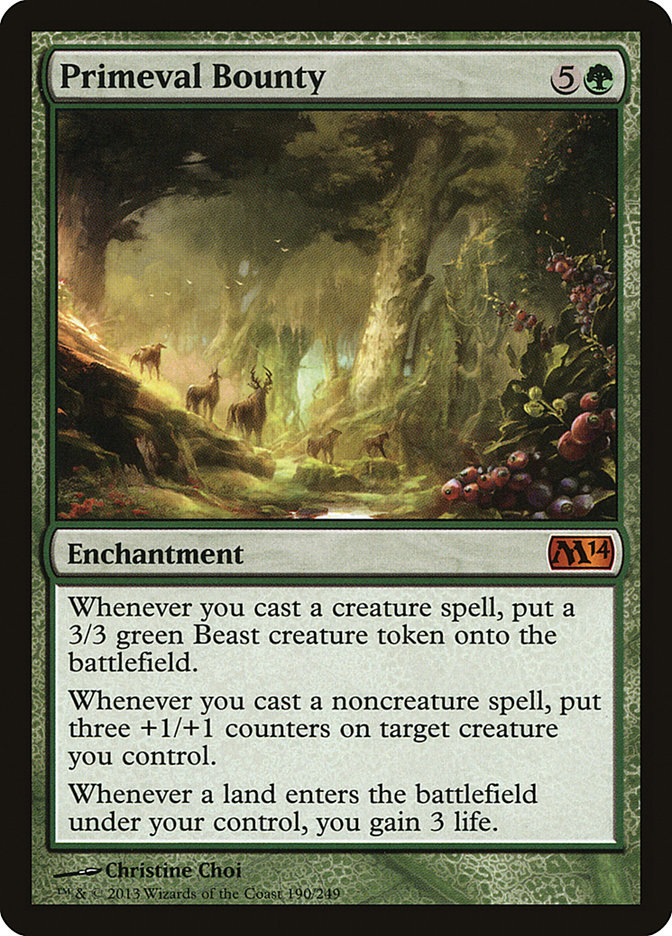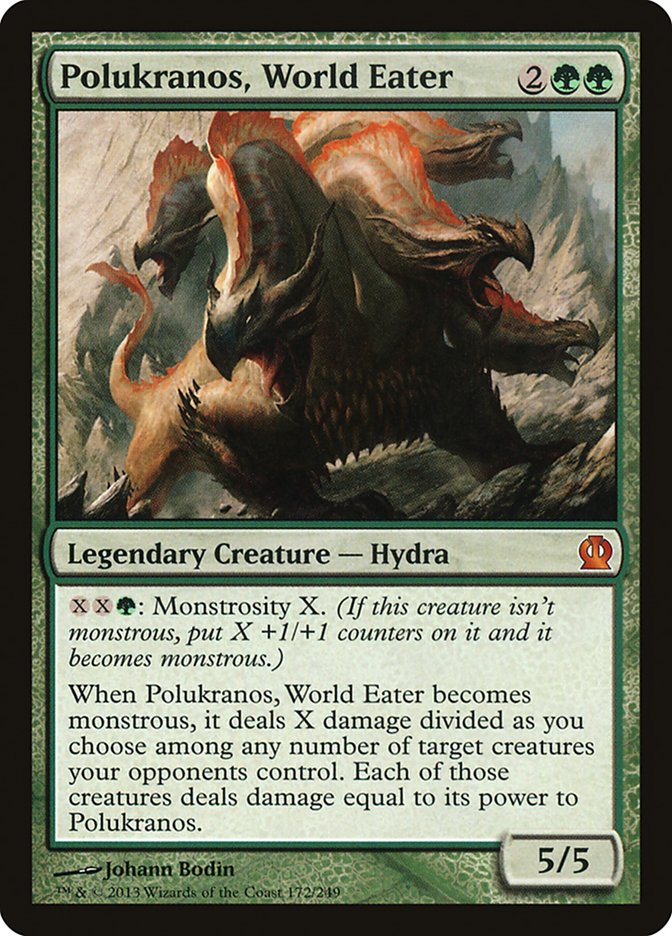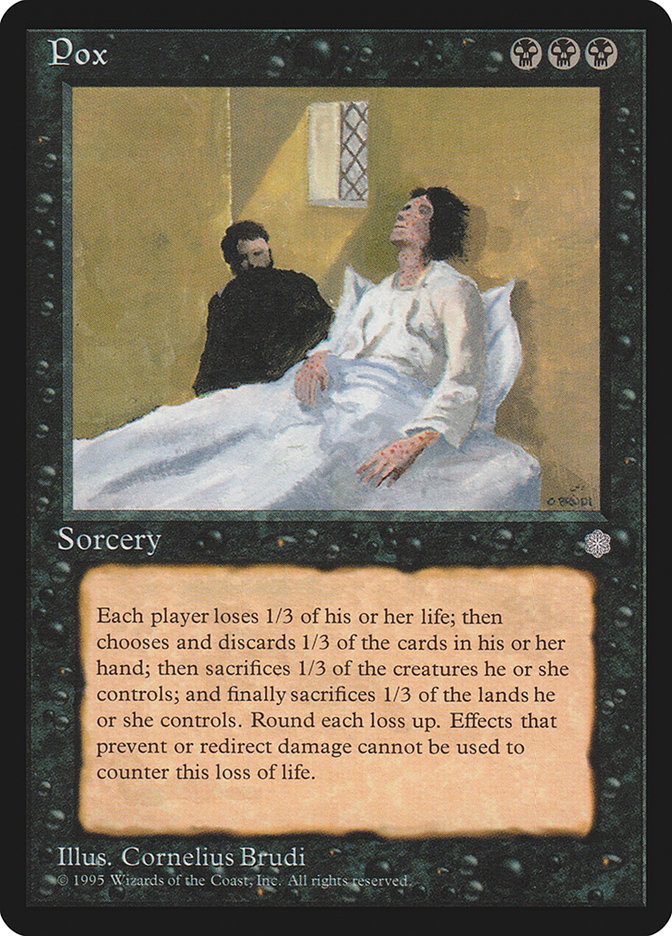I’ve always found having fun to be the most important thing in Magic. This is not exactly an original notion, and you might have heard similar sentiments coming from Peter Pan, Willy Wonka, or Dr. Seuss. However, I don’t just mention having fun as a reward in itself; I also believe it to be an absolutely key piece of a healthy and successful tournament career.
From my own experience, it’s infinitely easier to do well when you’re piloting a deck that you believe in and enjoy playing than it is when you’re not. When you’re not having fun, you put yourself at risk of experiencing negative emotions, which lead to a whole host of problems that can interfere with tournament success.
These are the reasons that I decided to skip the Grand Prix in Albuquerque last weekend. I pictured myself sitting in an airport, combing through some Standard deck in which I had very little faith. When tournaments become a joyless grind, your chances of success suffer. So instead I brewed up two decks that I genuinely love playing and made the short drive to Providence, Rhode Island.
Creatures (21)
- 2 Prime Speaker Zegana
- 1 Aetherling
- 4 Elvish Mystic
- 4 Polukranos, World Eater
- 4 Sylvan Caryatid
- 4 Prophet of Kruphix
- 2 Voyaging Satyr
Planeswalkers (4)
Lands (25)
Spells (10)

After a week of experimenting with a variety of wacky ideas, I wound up playing Prophet Bant in the Standard Open. I’d long had my eye on Plasm Capture as a way to fight the powerful four-, five-, and six-drop sorcery-speed cards on which all of the devotion decks rely. This deck was born when my friend and teammate Ben Seck messaged me for input on the Standard deck he’d been working on.
In preparation for Grand Prix Albuquerque, Ben had built a RUG deck in the shell of Makihito Mihara’s Green Devotion deck that also featured Prophet of Kruphix and Prime Speaker Zegana. Finally, I’d found a home for Plasm Capture! However, I felt that the Mana Drain effect was at its best when paired with Sphinx’s Revelation, so I sent Ben a rough list of a U/G deck which was similar to his but splashed white for Sphinx’s Revelation and omitted the red planeswalkers. He was intrigued, and we each spent the week talking, testing, and tuning Prophet Bant.
This is truly the epitome of a "big mana" deck. Not only does it feature ten mana dorks as acceleration, but it has three additional mana engines in Prophet of Kruphix, Plasm Capture, and Nykthos, Shrine to Nyx.
The next chunk of the deck is the devoted to card drawing—and we needed a lot to ensure that we always had something to spend our mana on and never flooded out. Sphinx’s Revelation is a natural fit for a deck that can commonly generate over twenty mana from one upkeep to the next! Prime Speaker Zegana is very powerful in combination with Prophet of Kruphix; Polukranos, World Eater; Aetherling; and several creatures in the sideboard. Finally, Jace, Architect of Thought helps smooth out your draws and bridge the gap into the end game. The card winds up being colossally more powerful when you can cast it on turn 3 since most opponents will not be prepared to fight it at that stage in the game, and it can be an excellent tool for beating the fast draws of W/R and Mono-Red Aggro.
Of course, the challenge of a deck like this is that with so much space devoted to mana and card drawing you have to be very disciplined in which win conditions you choose and how you use the few slots you have available for answer cards.
Aetherling stands as a very reliable win condition, and it’s a real treat to see the look on your opponent’s face when you flash it in at the end of their turn! We wound up playing one copy in the maindeck and one in the sideboard, but I would love to find room to play them both maindeck.
Primeval Bounty is a pet card that finally found a great home in Prophet Bant. The key to making this card good is that you must have enough mana and card drawing that you can continue both making land drops and casting spells even after it’s in play. In, say, a B/G Midrange deck, you might play your sixth land and slam Bounty, but if you have nothing left in your hand, you really won’t get the full value from it. However, when the game goes long and you have plenty more to do, this card is very difficult to beat. It also stands as your single best card against Mono-Black Devotion since they have no way to remove it from the board and cannot easily win the game before you cast it.
Finally, there’s Polukranos, World Eater, which provides everything the deck needs all in one card! It fits the curve well and is the best card you can play on turn 3 to swing a game against aggro. However, it’s also a great mana sink if you find yourself flooded in the late game, as you can frequently put seven or nine mana into its monstrosity activation. It can remove troublesome creatures from the board, is great with Prime Speaker Zegana, and serves as a win condition once you’re ready to close a game.
As I’ve mentioned, there’s very little space for removal in a deck like this. As much as I’d love to play with cards like Azorius Charm and Last Breath, you simply need every non-mana card to have a big impact on the game in order for the deck to function (not to mention that Prophet Bant doesn’t have that many sources of white mana). However, you do need a few answers that you can find in the late game once you’re drawing a lot of cards.
Something like Supreme Verdict would be impactful enough, but you don’t want to wipe out all of your own creatures. Consequently, we found Curse of Swine, which serves as a one-sided sweeper against all of Standard’s troublesome creatures (it can even exile Gods). When things are going well, you don’t have to worry at all about a bunch of ineffective pigs, so you can wipe away all of your problems with one card. Beyond that there are two copies of Detention Sphere as a catchall card, one that can sometimes slow the bleeding early on against fast aggro.
Prophet Bant has a lot of strengths against control decks, but as you might imagine, the card Supreme Verdict is a real nuisance for any deck playing this many mana creatures. Your best tools against control are Plasm Capture, Aetherling, Jace, and Sphinx’s Revelation.
Aside from the single exception of Supreme Verdict, basically the slower your opponent’s deck, the better the matchup is for Prophet Bant. Other green creature decks are great matchups, as you simply outclass them in the late game. Mono-Black Devotion is close but favorable, Mono-Blue Devotion is close but unfavorable, and the toughest matchups are Mono-Red and W/R Aggro. The aggro matchups are certainly not hopeless, but the die roll matters a lot and you need to have a good draw if you don’t want to be run over.
I wound up finishing 6-4 in the Standard Open, which put me in 101st place. All of my losses were close, and with a slightly better plan against aggro, it’s possible I could have had a much better finish.
Creatures (2)
Planeswalkers (4)
Lands (25)
Spells (30)

Mono-Black Pox is an old favorite of mine—a very, very old favorite from before I was even a tournament player! The last time I played the deck was to a Top 4 finish at the StarCityGames.com Invitational back in 2011. You can read some of my previous writings on the deck here and here.
Despite how goofy some aspects of Pox might look, it is in fact a powerful deck on par with Legacy’s more popular archetypes. The main difference between Pox and something like RUG Delver is that Pox has much more lopsided matchups. It’s quite strong against anyone trying to play fair with creatures, and certain combo decks will simply not be able to handle the level of disruption that Pox can produce. On the flip side, being a slow deck without counterspells means you can run into miscellaneous cards that can give you fits. Pox’s weaknesses are noncreature nonland permanents, graveyard interactions, and Ancestral Vision.
Beyond my love for the deck and my eagerness to play something I enjoyed, I thought this was a good time to bring back Pox because of the popularity of True-Name Nemesis. Quite literally every removal spell in the deck circumvents protection from black (and protection from Reid Duke), plus decks designed to attack with three-drop creatures are exactly the demographic on which Pox preys.
True-Name Nemesis is also the inspiration for my major new addition to Pox: Night of Souls’ Betrayal. It’s actually a natural fit since wiping out one-toughness creatures makes all of your sacrifice effects that much more powerful. It stops troublesome cards like Lingering Souls and Snapcaster Mage and can give you random wins against tribal decks like Elves and Goblins. Additionally, games go so long with Pox that turning some portion of the opponent’s deck into dead draws (think of topdecking Delver of Secrets when Night of Souls’ Betrayal is in play) really does add up.
I finished 6-2-1 in the Legacy Open, intentionally drawing the last round into Top 32. I beat up on several G/W/x Maverick type decks, went 1-1 against RUG Delver, and lost a close match to Storm.
Of the two decks I played this weekend, Pox was the one that exceeded my expectations. I went into the tournament thinking that I was playing a subpar deck but was pleasantly surprised by both the general power level of Pox and the way it matched up against Legacy’s top strategies. There are fewer Jace, the Mind Sculptors than there have been in recent memory, and many players don’t include a single basic land in their whole deck! I could envision playing Pox again in an event that is important to me as long as I feel the field is right for it. Just be aware of the risks—there are some matchups and situations in which Pox has very little chance to win.
To give you a more exact idea of how good Prophet Bant is, let’s say for the sake of argument that my average win rate with Mono-Black or Mono-Blue Devotion (the top decks in Standard) is 50%. My win rate with Prophet Bant is probably around 45%. It’s not uncompetitive and does have some good matchups, but I do think it’s noticeably worse than the absolute best decks of the format. That said, it might only take one or two small improvements to bring the deck up to fighting shape!
Going into this weekend I’d done poorly in my last Standard event and my last Legacy event and had a general feeling of discouragement. However, after two fun and rewarding tournaments with Prophet Bant and Mono-Black Pox, I feel rejuvenated! I remembered my love for the game and am eager to sink my teeth into the formats again and come up with something great for the Invitational next month!
I can’t say for sure whether I’ll be playing these two decks again anytime soon, but I will be testing them and keeping an eye out for the right time or a possible improvement that might make me take them out of retirement.
If you’re like me and need to devote a weekend to just having a lot of fun playing Magic, then you should do it! Pick up one of these two decks or try another one that suites you. Remember that it’s all about loving the game.



